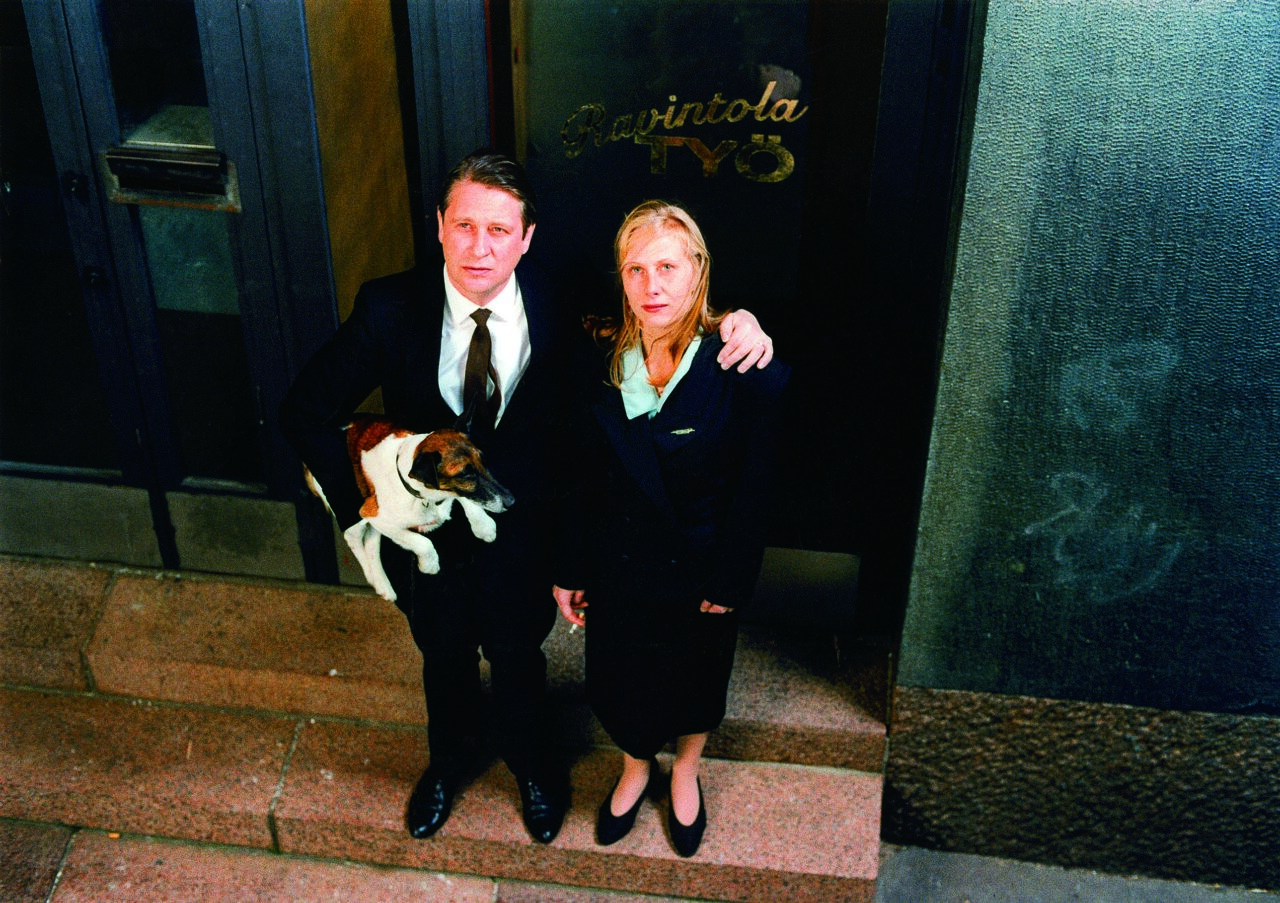INDEX
Transitioning from Utopian Escapes to a Robust Cinematic Narrative: Evolutions Inspired by “Drifting Clouds”
However, we cannot overlook the many films between “The Match Factory Girl” and “Fallen Leaves.” In the sense that they bring proletarian life into their own cinematic world, they are similar to the “Proletariat Trilogy,” but “Fallen Leaves” does not depict an escape to utopia. This has to do with the fact that Kaurismäki reached an important turning point as a filmmaker during those 30 years.
If I had to recommend one more film besides “Proletariat Trilogy” for those who have never seen any of Aki Kaurismäki’s films, I would without hesitation recommend “Drifting Clouds” (1996). After “The Match Factory Girl” we have “I Hired a Contract Killer” (1990) and “The Bohemian Life” (1992), both of which took place outside of Finland, as if leaving Finland, followed by the critically unsuccessful “Leningrad Cowboys Meet Moses” (1994) and the nostalgic (1994), a nostalgic film about a Finnish filmmaker who has created a masterpiece with all his might, interspersed with “Take Care of Your Scarf, Tatiana” (1994), a small film that seemed to return to his origins as a cineaste who loved classic cinema. This film can also be seen as an important turning point in Kaurismäki’s career, considering that this film, “The Man Without a Past” (2002), and “Lights in the Dusk” (2006) are collectively known as his “Finland Trilogy.”

Of course, the protagonist of “Drifting Clouds” is also a laborer. Ilona, who works in a traditional restaurant, and her husband Lauri, a tram driver, both lose their jobs at the same time. Amid a deep recession, the couple cannot find new employment, and Lauri even loses all of his money in a casino. However, Ilona decides to become the owner of a new restaurant with her former friends.
In the early 1990s, the collapse of the Soviet Union, an important trading partner of Finland, led to a serious economic crisis that left many people unemployed. “Drifting Clouds” is a direct reflection of the social conditions of the time, and most importantly, Kaurismäki did not send his characters on a journey to somewhere other than here. He finally affirmed strongly that the characters should continue to live robustly in that place.
Perhaps making films abroad after “The Match Factory Girl” made Kaurismäki realize that there is no “utopia” outside of Finland. But more than that, the more he looked at the depressed workers back home, the more he wanted to create a place where they could live with their feet on the ground, at least in his films. The name of the restaurant Ilona opens at the end of “Drifting Clouds” is “The Job. The place for her to live is “Job” as a source of pride for workers.
“Drifting Clouds” is also a film that clearly depicts an independent woman. The film was originally intended to feature Matti Peromper, the face of Kaurismäki films, in the lead role, but after his sudden death in 1995 at the age of 44, Kati Outinen, another face of Kaurismäki’s work, was chosen to play the leading role. She plays Ilona, a proud worker who has worked for many years in a good restaurant, and who supports her husband Lauri but is not dependent on his income. Furthermore, after the couple loses their jobs, the wife takes the initiative to create a new source of income. Oddly enough, this character is in contrast to the protagonist played by Outinen in “The Match Factory Girl,” who was trying to rely on a rich man to escape from a life of poverty.
























